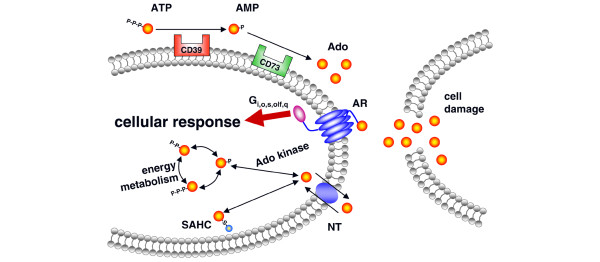Figure 1.
Sources of extracellular adenosine. Intracellular hydrolysis of adenine nucleotides or S-adenosylhomocysteine (SAHC) yields adenosine that is released via specific nucleoside transporters (NT) or nonspecifically upon cell membrane damage. In the extracellular space, adenine nucleotides are hydrolyzed by ectoapyrase (CD39) and ecto-5'-nucleotidase (CD73). Adenosine binds to specific G-protein-coupled receptors, namely the adenosine receptors (AR), which initiate various cellular responses.

